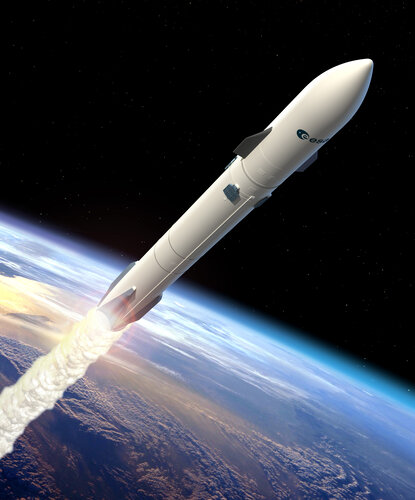Virgin Galactic eyes possible expansion into Italy
Thursday, 12 December 2024 19:31This request seems a bit unusual, so we need to confirm that you're human. Please press and hold the button until it turns completely green. Thank you for your cooperation!
Press and hold the button
If you believe this is an error, please contact our support team.
185.132.36.159 : 2e505d80-d494-4af2-8edd-2fa9283c
Locus Lock to expand GNSS receiver production with new funding
Thursday, 12 December 2024 17:24

Human settlement of Mars isn't as far off as you might think
Thursday, 12 December 2024 16:40This request seems a bit unusual, so we need to confirm that you're human. Please press and hold the button until it turns completely green. Thank you for your cooperation!
Press and hold the button
If you believe this is an error, please contact our support team.
185.132.36.159 : 37e6319b-0668-4476-b635-745d6c7a
NASA successfully integrates Roman mission's telescope, instruments
Thursday, 12 December 2024 16:15This request seems a bit unusual, so we need to confirm that you're human. Please press and hold the button until it turns completely green. Thank you for your cooperation!
Press and hold the button
If you believe this is an error, please contact our support team.
185.132.36.159 : 52ea4a06-4a21-480a-a96e-e20f377b
U.S. military increases reliance on commercial industry for space intelligence
Thursday, 12 December 2024 16:00

NASA's crew capsule had heat shield issues during Artemis I—an aerospace expert on these critical spacecraft components
Thursday, 12 December 2024 15:20This request seems a bit unusual, so we need to confirm that you're human. Please press and hold the button until it turns completely green. Thank you for your cooperation!
Press and hold the button
If you believe this is an error, please contact our support team.
185.132.36.159 : 34a9cbd0-3b09-46b9-b322-cd20bbec
NASA's Lucy spacecraft prepares for second Earth gravity assist
Thursday, 12 December 2024 14:46This request seems a bit unusual, so we need to confirm that you're human. Please press and hold the button until it turns completely green. Thank you for your cooperation!
Press and hold the button
If you believe this is an error, please contact our support team.
185.132.36.159 : 7e4a8693-d2ad-42f0-91fb-5ad90486
L3Harris ramps up satellite production in response to military demand
Thursday, 12 December 2024 14:00

Smile's other half arrives | Let’s Smile (action snippet)
Thursday, 12 December 2024 13:00 Video:
00:01:22
Video:
00:01:22
On 9 December 2024, the Smile Platform arrived safely at Amsterdam Schiphol airport and was subsequently transported to ESA's European Space Research and Technology Centre (ESTEC) in Noordwijk, the Netherlands. It came a long way, having travelled all the way from Shanghai, China.
This marks an important step in the Smile mission, as the spacecraft's two halves are now in the same location, ready to be joined together. Launching in around a year from now, Smile will study space weather and the interaction between the solar wind and Earth’s environment.
The Platform, built by the Chinese Academy of
Cofactr raises money to enhance supply chain and logistics platform
Thursday, 12 December 2024 12:00

Companies seek more support for Space Force’s commercial reserve initiative
Thursday, 12 December 2024 11:24

JPL completes investigation of Ingenuity’s final flight
Thursday, 12 December 2024 09:25

Pathfinder activity to pave the way for European very heavy reusable rocket
Thursday, 12 December 2024 09:24
Artemis Accords reach 50 signatories with Panama and Austria
Thursday, 12 December 2024 08:17

ESA to support Indian human spaceflight missions
Thursday, 12 December 2024 07:00
On 4 December 2024, the European Space Agency (ESA) and the Indian Space Research Organisation (ISRO) signed an agreement that will see ESA provide ground station support to the missions in ISRO’s Gaganyaan human spaceflight programme.

